|
Printables |
PowerPoints |
Online exercises |
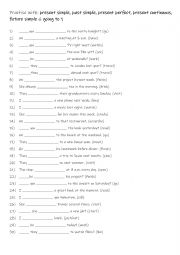
|
A2+-B1 Practise with present simple, past simple, present perfect, present continuous, future simple & going to 1
Learning the present simple, past simple, present perfect, present continuous, future simple, and "going to" is crucial because they are the most commonly used tenses for everyday communication. Each tense allows speakers to express actions and ideas clearly across different time frames. The present simple is used for routines and facts (I work eve...
Level: intermediate
Age: 9-100
Type:
Downloads: 105
|
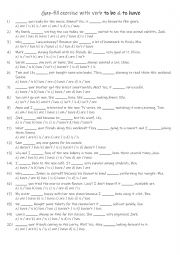
|
A1+-A2 Present simple multiple choice with verb to be & to have
Students read the present simple sentences to see which auxiliary verb is needed to complete the gap-fills. Answers on page 2.
Level: elementary
Age: 8-100
Type:
Downloads: 107
|
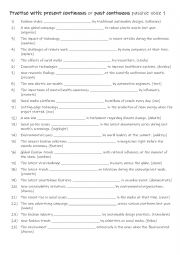
|
A2+-B1 Practise with passive voice: present continuous or past continuous 1
Learning the future continuous and future perfect tenses is really essential for expressing specific future actions and time relationships. The future continuous (e.g., I will be working at 3 PM tomorrow) describes actions that will be in progress at a particular moment in the future, which is useful for planning or predicting ongoing events. The f...
Level: intermediate
Age: 10-100
Type:
Downloads: 112
|
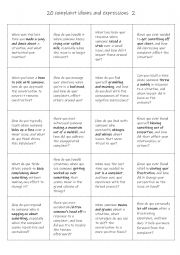
|
B1+-C1 20 complaint idioms and expressions 2
This is a speaking reinforcement activity to supplement the other worksheet I uploaded on 13/1/2025. Students working in pairs or small groups can either ask each other the questions or answer the question themselves.
Level: intermediate
Age: 12-100
Type:
Downloads: 109
|
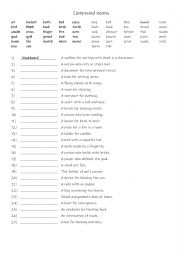
|
A2-B1 27 compound nouns
Students familiarise themselves with the words in bold and the words in normal font. Then they read the description sentences to workout which compound noun creates the word being described. Answers on page 2.
Level: elementary
Age: 8-100
Type: worksheet
Downloads: 112
|
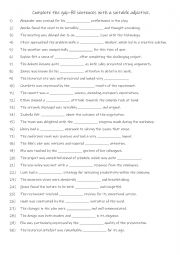
|
B2-C1 Complete the gap-fill sentences with a suitable adjective.
Students read the sentences and complete the gap-fill with a suitable adjective.This worksheet could be used individually, in pairs or small groups.If a team has a different adjective to the others they get 3 points for a suitable adjective and when the same adjective is used by 2 or more groups only 1 point is given. Possible answers are on page 2...
Level: advanced
Age: 11-100
Type:
Downloads: 110
|
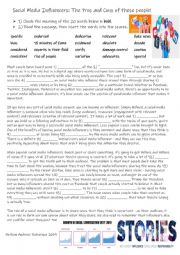
|
The phenomenal rise of ´┐ŻSocial Media Influencers´┐Ż: The Pros and Cons of these people!
500-Word reading article with a 20-word gap fill exercise about ´┐ŻInfluencers´┐Ż. It takes an in-depth look at their positive and negative influence in changing people´┐Żs minds and opinions on today´┐Żs topics of interest. An answer sheet is included. For higher level students they could be put in groups to give / present their opinions in a presentation...
Level: elementary
Age: 12-100
Type: worksheet
Downloads: 2217
|
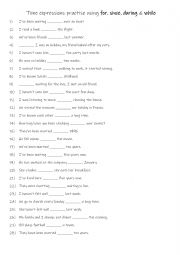
|
A2+B1 Time expressions practise using for, since, during & while
Learning to use for, since, during, and while is important because these words help student´┐Żs express time accurately in English, especially when talking about the duration and timing of events. For indicates the length of time an action takes place, while since pinpoints when an action started and continues until now, helping to show continuity. D...
Level: intermediate
Age: 9-100
Type:
Downloads: 101
|
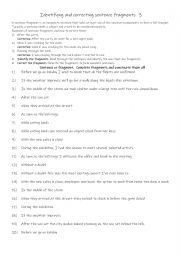
|
Identifying and correcting sentence fragments 3
First, students need to familiarise themselves with identifying and correcting sentence fragments. Then they read the sentences to identify and correct the issue and punctuate all of the sentences Answers on page 2.
Level: elementary
Age: 8-100
Type:
Downloads: 109
|
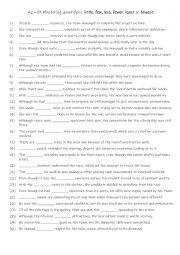
|
A2+-B1 Mastering Quantifiers Little, Few, Less, Fewer, Least, and Fewest
Learning to use little, few, less, fewer, least, and fewest correctly is essential for precise and accurate communication, especially when describing quantities. Mastering these terms allows for nuanced expression, helping to convey exact amounts or degrees more effectively. Understanding which to use with countable nouns ("fewer apples") versus un...
Level: elementary
Age: 9-100
Type:
Downloads: 105
|
|
|
|
|












